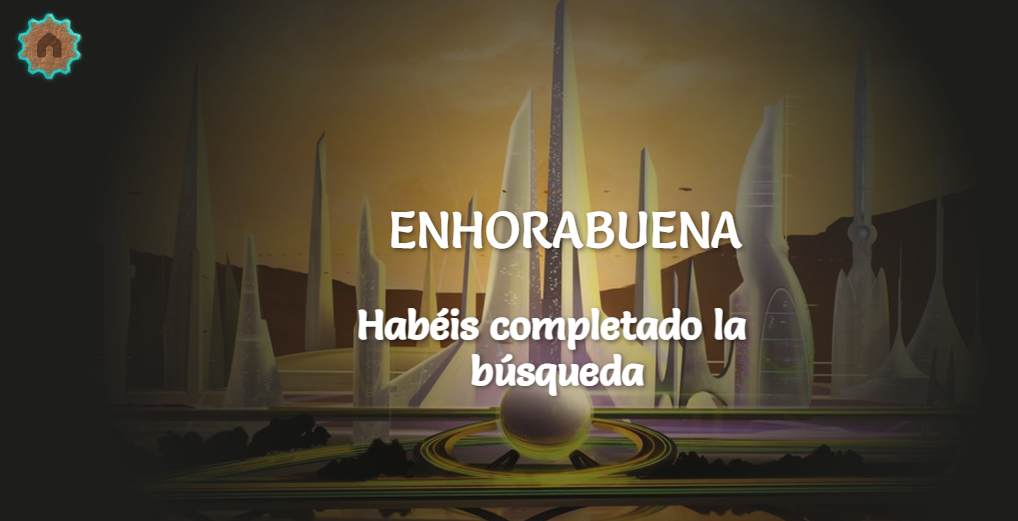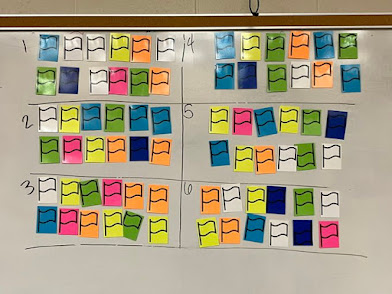This week I have been thinking about ways to assess my students work informally in a fun, non threatening, meaningful way at the end of a teaching unit, while they have the opportunity to put their linguistic skills into practice in a real situation.
This is easily done via Project Based Learning (teaching a unit giving students all the tools they will need for later, to carry out a particular writing/reading/listening/oral project). However, I wanted to think of another way to do this involving all the skills in the project, promote collaboration, movement and ultimately fun!
I thought that a game would tick all these boxes so I planned a Treasure Hunt game to carry out at the end of a particular unit or after several units. This is what I came out with, thinking of a Y10/Y11 group. The Treasure Hunt involves culture as well and to generate it I used the help of ChatGPT and HeyGen (a tool that allows you to create a video Avatar from a photo). This is the result:
La Caza del Tesoro
Divide the class in pairs or groups of threes. You will need to print off the following QR Codes (one per group so I suggest you stick them on colour card and assign a colour to each group). This is important as the students will need to move around the school and you don't want 30 students scanning a QR code at once! It will be much easier if students look for the QR codes with their colour. There are 7 tasks to complete in total but you can remove or add more!
QR Code 1
This will set up the context of the Treasure Hunt. To create the video in the slike, I used the App ToonMe on my iPhone from a picture of mine. Then I used HyGen to create the video. HyGen is an AI tool that allows you create videos from a script that you write. You only get 1 minute free but I thought it was cool!
If your context is concise, say 10 seconds, you can create up to 6 little videos for free! Otherwise, PhotoSpeak is completely free and it does the job, although not as realistic! Students Scan the QR code and will get the image below. If they click on the hourglass icon, a message comes up telling students to go to a particular area of the school and look for their following coloured QR Code.
QR Code 2: Task 1
This task is a writing collaborative task. Students need to create a dialogue in Spanish about their Free Time and use the app Chat Animator to write it. Chat Animator will create a little video of their text dialogue, which students must download to prove they have accomplished the task. Again clicking the hourglass will direct students to the next task.
QR Code 3: Task 2
This task is focussed on Reading, Translation and Culture. Students have to complete the Riddle, super easy (the answer is Ceuta), and go to the QR code on the slide which will take them to a Google Earth Presentation. The presentation takes students around 5 iconic places in Ceuta. They just have to follow the presentation and translate into English the information about the landmarks. I used ChatGPT to generate the five landmarks with information about them in Spanish at GCSE level.
QR Code 4: Task 3
This task involves Oral skills and Culture. Students need to look for different famous people in Spain and create a Roleplay/Conversation where each participant adopts the personality of a Spanish celebrity and ask questions to each other to find out key information about the different characters. I just expect students to ask basic questions about their age, name, birthday, what they do for a living, why they are famous, what they work on, family members etc.. It is also a great opportunity to learn about celebrities in Spain, a new topic inf the new GCSE!
QR Code 5: Task 4
This task focusses on Reading: Fill in the Gaps. The QR code will take students to a LearningApps activity on fill in the gaps on the topic of Environment.
QR Code 6: Task 5
This is another Oral task. The QR code in the slide will take students to a Wheel of Names with lots of questions on Theme 2. They just have to play Stone, Paper and Scissors, evolution with each other until one of them wins (becomes Superman!), while spinning the wheel and answering the question that comes up!
QR Code 7: Task 6
This an Oral and Cultural task. Students find out the name of the Picasso picture on the slide and then, collaboratively prepare a collaborative presentation describing the actual picture and recording it using Flip, which they will access via the QR code in the slide. This is a very powerful activity which will require a follow up in a subsequent lesson: What does Guernica represent? What was the Civil War in Spain? What happened? Consequences? Of course in English! It is a great way to practise vocabulary for the GCSE Photocard.
QR Code 8: Task 7
This is another Reading Task. Students scan the QR code on the slide which will take them to a Google Doc with a reading comprehension text on celebrities. I did use ChatGPT to create this text. I asked it to create a 150 words text in Spanish at GCSE level on the advantages and disadvantages of being a celebrity using a specific list of vocabulary, taken from the AQA Excel document with the draft Spanish vocabulary list on Celebrities, for the new GCSE.
It did it in 5 seconds! Then, I asked it to generate 6 reading comprehension questions in English. The hourglass will tell students to get back to their Spanish classroom.
QR Code 9: The end!
This just tells them Congratulations, in Spanish, and at this point, the teacher needs to check the tasks have been completed. In a subsequent lesson, I would give them the treasure: some tapas, certificates, merits or any other reward you really want!
For this activity you will need in total these 9 QR codes x the number of groups/pairs you have. My treasure hunt involves walking around the whole school and it will take 2 or three lessons to complete properly but you can have fewer tasks and/or simpler tasks such as small translations or just cultural questions. Instead of running around the school, you may want to restrict the hunt to two corridors or your school hall!
It can be adapted from Y7 to Y13, just change the tasks! I think it is a great way to assess students with a real game!






























